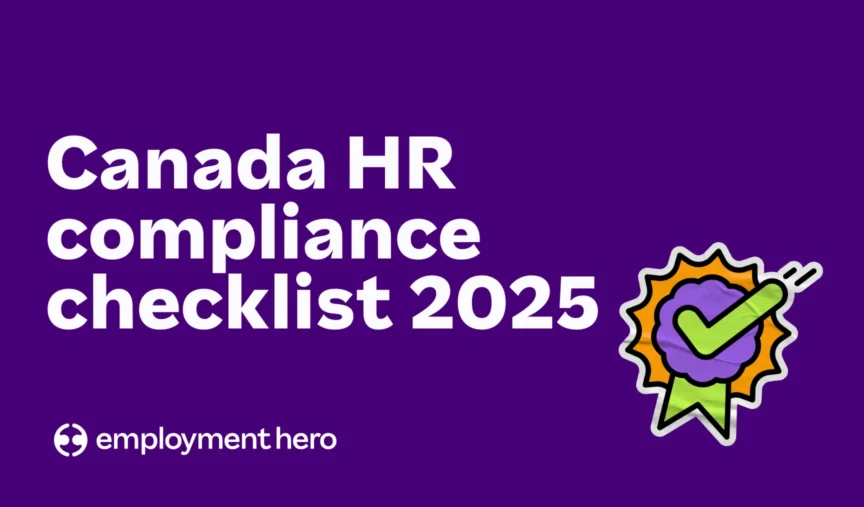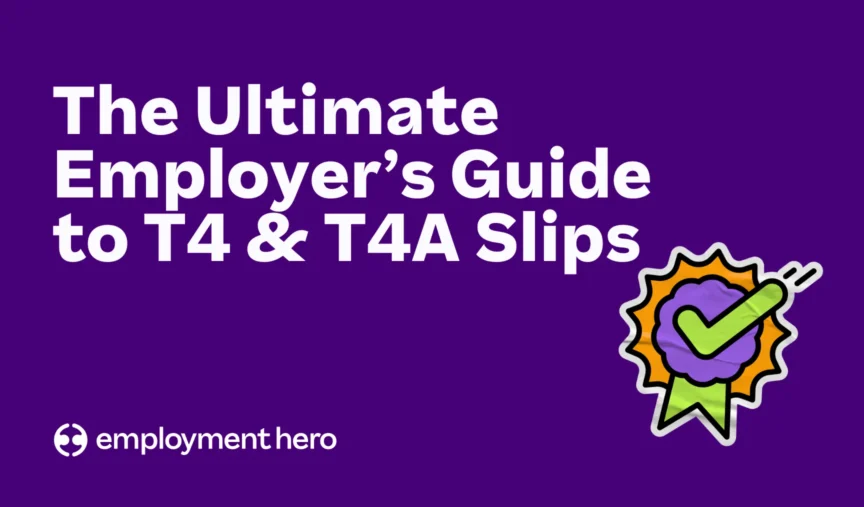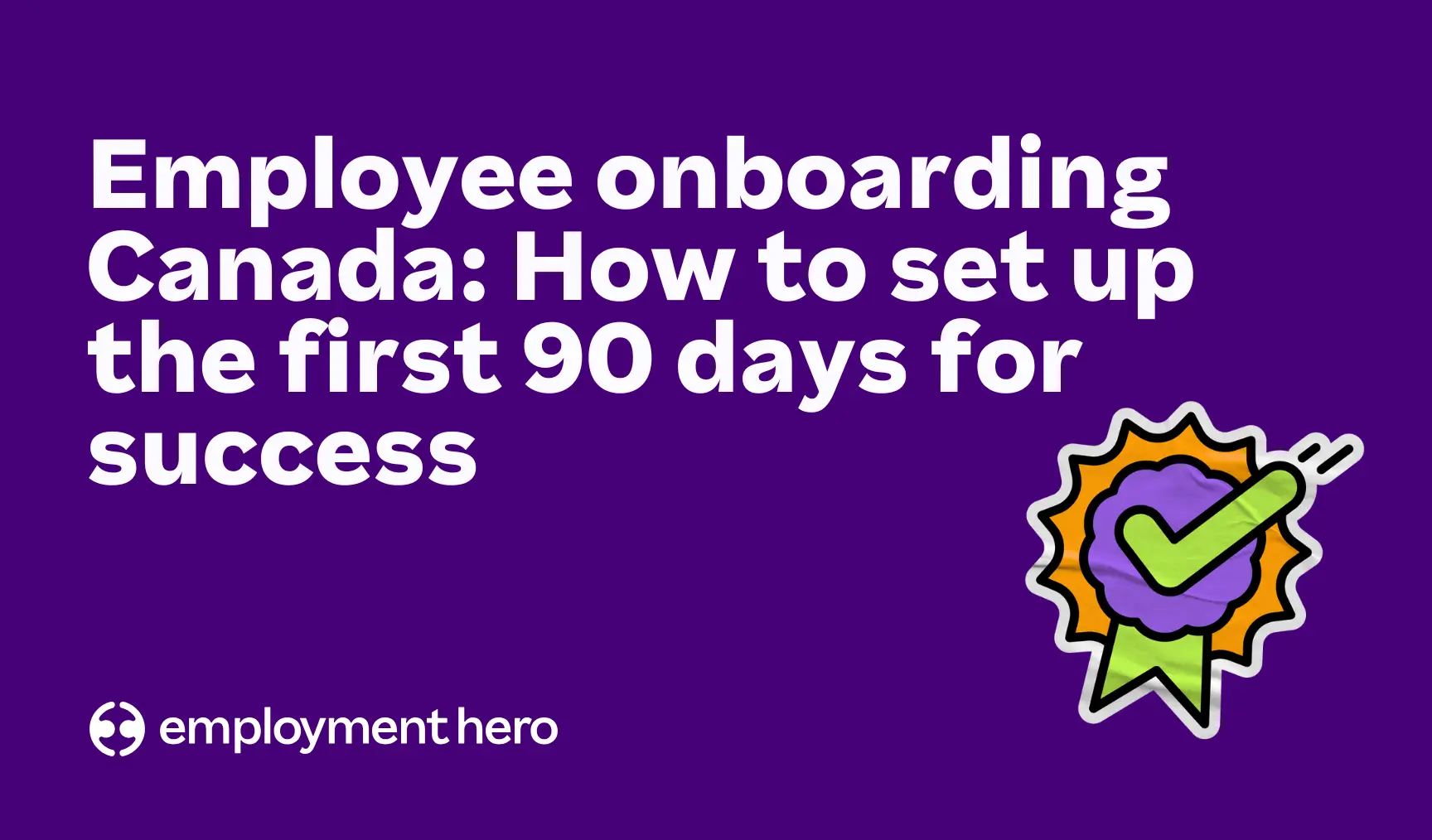Resignation acceptance letter template and guide
Published
Resignation acceptance letter template and guide
Published
Saying goodbye to a team member is never the easiest part of the employment journey, but it’s something almost every employer will face. When an employee hands in their notice, there are a lot of moving pieces to think about. Workload handovers, payroll updates and sometimes even morale within the team.
An important step in the process is issuing a resignation acceptance letter. This letter ensures there is no ambiguity about when the employee is leaving, what obligations still need to be met and how the company will finalize things like unused vacation pay.
In this guide, we will walk through why these letters matter for compliance, what to include and how to draft one. To save time, you can download our resignation acceptance letter template that’s written by our HR experts and easy to personalise.
What is a resignation acceptance letter?
A resignation acceptance letter is the official written response you provide after an employee submits their resignation.
It gives the resignation “official weight”, something a quick thank-you in a meeting or a casual email can’t do. It becomes part of the employee’s HR file, it informs payroll and benefits teams and it reassures the employee that their resignation has been processed properly.
A standard resignation acceptance letter should cover:
- The employee’s current role and their confirmed last day of work
- Acknowledgement that their resignation has been accepted
- Any contractual or notice period obligations that still apply
- An outline of what they can expect regarding final pay and unused entitlements
- Any next steps, such as returning company equipment or completing a handover
Without this letter, you risk potential misunderstandings. For example, an employee may assume their last day is sooner than you planned, or HR may miss an entitlement that leads to a payroll dispute.

What’s the proper process?
The moment an employee resigns, you enter into a process that has both legal and professional expectations. The proper sequence of events ensures that everyone is on the same page and it protects your business from future confusion.
Here’s how the process usually goes:
- The employee provides notice: Ideally, they submit a resignation letter (often required by contract), stating their intent to resign and their last working day. Some employees may give verbal notice first, but you should always request it in writing for records.
- You acknowledge the resignation: This can be done verbally in the initial meeting, but should always be followed up formally with a written acceptance.
- You confirm key details in writing: Your confirmation of resignation letter is where you lock in the last working date, notice period, entitlements and any other exit requirements.
- You file both letters: The employee’s resignation letter and your acceptance should be stored in their HR file. This protects you if questions ever come up later, for example, in reference checks, audits, or disputes over final pay.
By treating the resignation acceptance as a standard part of the process, you create consistency across your organization. That makes life easier for managers, HR, payroll and the employee who is transitioning out.
How to draft a resignation acceptance letter
When it comes time to actually write the letter, it can feel a little daunting. You want to strike the right balance of clear and compliant, but also respectful and supportive. The good news is that if you follow a few key steps, you can create a letter that covers all bases.
Step 1: Acknowledge receipt of the resignation
Begin by confirming that you have received the employee’s resignation. This might sound obvious, but it’s the most important step. It ensures there is no dispute later about whether the resignation was accepted or when it was submitted. Use professional, straightforward language like:
“We confirm that we have received your resignation dated [date].”
This line alone removes ambiguity and establishes the paper trail.
Step 2: Confirm the final working day
The most critical detail for payroll, scheduling and handover planning is the last day of employment. Reference the employee’s contract and their notice period when confirming the date. For example:
“Your final day of employment with [Company Name] will be [date], which reflects the required notice period outlined in your contract.”
If the notice period is being shortened or waived, confirm this explicitly.

Step 3: Address notice period obligations
Employees are usually expected to work through their notice period. In some cases, you may agree to a shorter timeframe, or place them on “garden leave” where they are paid but not required to attend work.
Make sure your letter clearly documents whichever arrangement applies. This protects you in the event of confusion about scheduling, workloads, or pay entitlements.
Step 4: Mention entitlements and final pay
Employees often have questions about vacation pay, benefits, or unused overtime. While you don’t have to list a detailed financial breakdown, it’s wise to confirm in writing that these will be processed. A simple line such as:
“Any unused vacation days will be paid out in your final pay and your benefits coverage will remain active until [date].”
This gives employees confidence that they won’t have to chase you later for what they are owed.
Step 5: Offer thanks and best wishes
Even if the timing of the resignation is inconvenient, it’s important to close the letter on a positive note. A small gesture of appreciation goes a long way. This helps maintain goodwill, which can matter for future references or even boomerang employees (those who return to the company later).
“We would like to thank you for your contributions and wish you continued success in your career.”
Step 6: Explain next steps
Finally, make the letter actionable. If the employee needs to complete an exit interview, hand over client accounts, or return company equipment, this is the place to outline those expectations.
This prevents last-minute scrambling and ensures the transition is smooth for both sides.
If you’d rather not start from a blank page, you can use our confirmation of resignation letter template. Simply add in your employee’s details and you’ll have a professional letter ready to go.

What does Canadian law say about resignation letters?
In Canada, resignation law is shaped by both employment contracts and provincial employment standards. There is no single federal rule that applies across all workplaces, so it’s important to know what applies in your province or territory.
Here are the key things to understand:
Employees are not always required to give written notice
In most Canadian provinces and territories, there is no strict legal requirement for employees to provide a resignation letter in writing. A verbal resignation can technically be valid, provided it is clear and intentional.
That said, relying on verbal communication alone can cause misunderstandings about dates or intent. This is why most employers encourage or require resignations to be put in writing. It creates a clear record for both parties and makes the offboarding process smoother.
Notice periods are not always set by law
Unlike terminations, where provincial employment standards require employers to provide minimum notice, employee resignations are usually not regulated by statute.
Instead, the required notice period is typically outlined in the employment contract or company policy. For example, a contract might state two weeks’ notice is required, but if the employee leaves earlier, provincial law often does not force them to comply. Employers should still confirm what is expected contractually and handle any deviations with professionalism.

Employers can’t refuse a resignation
Once an employee has communicated their resignation, you are obligated to respect their decision. Canadian law does not give employers the right to refuse or delay a resignation.
While you can have a conversation about notice periods or a preferred transition date, ultimately the employee’s decision stands. Your role is to formally acknowledge their resignation, confirm the last working day and manage the handover process fairly and consistently.
Final pay rules are set by provincial standards
While resignation notice may not be regulated, final pay is. Provincial employment standards legislation sets clear timelines for when employees must receive their outstanding wages, including vacation pay.
For instance, in Ontario, final pay must be issued no later than the next regular payday or seven days after the employment ends, whichever comes later. Other provinces have similar rules, though the exact timeframe can vary. Employers should always check their provincial legislation to ensure compliance and avoid penalties.
Record-keeping obligations apply to resignations
Employment standards across Canada require employers to maintain proper employment records, including details of when an employee started and when their employment ended. Having both the employee’s resignation letter and your confirmation of resignation letter on file satisfies this requirement and provides valuable documentation if you are ever audited or if disputes arise in the future.
Because rules vary, it’s always best to double-check the requirements in your province and ensure your resignation acceptance process aligns with both contractual obligations and statutory requirements.
Download our resignation acceptance letter template
Saying goodbye to a team member might never be the highlight of your week, but handling it properly shows professionalism and care.
If you’d rather not fuss with formatting or wonder whether you’ve missed a key detail, grab our resignation acceptance letter template. It’s already structured, easy to personalize and saves you time so you can focus on the handover.
FAQs about resignation acceptance letters
Yes. While you can’t refuse a resignation, you should acknowledge and accept it formally in writing to document the process.
A professional yet supportive tone is best. Thank them for their work, confirm their final day and express good wishes for the future.
Ideally within a few business days. Prompt confirmation ensures there is no uncertainty around dates or obligations.
At minimum, include the employee’s role, final working date, confirmation of notice period obligations and a note of thanks. You may also wish to mention final pay or benefits.
The information in this template is current as at 1 September 2025, and has been prepared by Employment Hero Pty Ltd (ABN 11 160 047 709) and its related bodies corporate (Employment Hero). The views expressed in this template are general information only, are provided in good faith to assist employers and their employees, and should not be relied on as professional advice. The Information is based on data supplied by third parties. While such data is believed to be accurate, it has not been independently verified and no warranties are given that it is complete, accurate, up to date or fit for the purpose for which it is required. Employment Hero does not accept responsibility for any inaccuracy in such data and is not liable for any loss or damages arising either directly or indirectly as a result of reliance on, use of or inability to use any information provided in this template. You should undertake your own research and to seek professional advice before making any decisions or relying on the information in this template.
Register for the template
Related Resources
-
 Read more: HR compliance checklist Canada 2025: What employers need to know
Read more: HR compliance checklist Canada 2025: What employers need to knowHR compliance checklist Canada 2025: What employers need to know
This HR compliance checklist covers workplace safety, privacy, employee records and province-specific obligations for employers.
-
 Read more: T4 guide for employers: Preparing and filing T4 and T4A slips in 2026
Read more: T4 guide for employers: Preparing and filing T4 and T4A slips in 2026T4 guide for employers: Preparing and filing T4 and T4A slips in 2026
Learn how to prepare, reconcile and file T4 and T4A slips. This step-by-step T4 guide for employers explains deadlines, boxes…
-
 Read more: Employee onboarding Canada: How to set up the first 90 days for success
Read more: Employee onboarding Canada: How to set up the first 90 days for successEmployee onboarding Canada: How to set up the first 90 days for success
Learn how to create an effective employee onboarding plan. Explore a 30-60-90 day framework, compliance requirements and strategies for long-term…

















